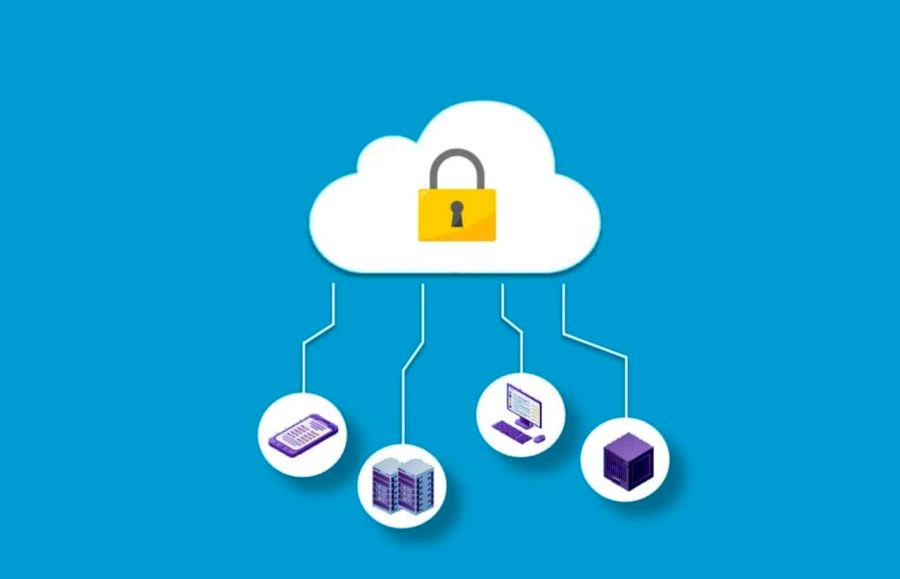
What Is Cloud Security?
Cloud security is a form of cyber security which is used in the protection and preservation of the data which is stored online with the help of platforms computing from cloud from deletion, leakage, theft, etc. There are many methods with which we can provide cloud security. For example, by using firewalls, penetration testing, obfuscation, tokenization, virtual private networks (VPN), and avoiding public internet connections.
Therefore, cloud security broadly refers to
- Taking useful measures to protect the stored data and digital assets online with the help of business cloud service provider.
- It is the delivery of different type of online services provided with the help of internet such as networking, data storage, databases, networking, servers, and software.
- It a protective measure used to protect data including the two factor authorization (2FA), security tokens, services provided by firewall, encryption of data, etc.
Cloud computing categories
Cloud security varies depending on the type of cloud computing used. Cloud computing is divided into four categories:
- Public cloud services, operated by a public cloud provider.
- Private cloud services provided by a public cloud provider.
- Internally managed private cloud services.
- Hybrid cloud services.
Cloud security in companies
When looking for a business cloud provider, look for one that does background checks and security clearances to defend against harmful insiders. Most people believe that outside hackers are the most serious threat to cloud security, but employees can be just as dangerous. These employees aren’t always nasty insiders; they’re frequently employees who unwittingly make blunders like utilizing a personal smartphone to view critical company data outside of the company’s own network’s protection.
More companies are discovering the numerous commercial advantages of transferring their systems to the cloud. business Cloud computing enables businesses to operate at scale, cut technological expenses, and implement agile systems, giving them a competitive advantage. Organizations must, however, have complete confidence in their cloud computing security, and all data, systems, and applications must be protected from data theft, leakage, corruption, and deletion. These services are provided by business cloud provider.
Threats can be found in any cloud model. Enterprises like IT organizations are understandably wary of shifting mission-critical systems to the cloud, and whether you’re running a native cloud, hybrid cloud, or on-premise environment, the necessary security measures must be in place. Cloud security incorporates all of the features of traditional IT security in companies, allowing businesses to take advantage of the many benefits of business cloud computing while keeping safe and meeting data privacy and compliance standards.
Customers are responsible for securing their data and managing who has access to it in all sorts of public Enterprise cloud provider gives the business cloud provider. Business Cloud computing data security is critical to properly embracing and reaping the benefits of cloud computing. Enterprises contemplating popular SaaS products such as Microsoft Office 365 or Salesforce should evaluate how they will meet their shared duty for cloud data security. Cloud for business services like Amazon Web Services (AWS) or Microsoft Azure should develop a more comprehensive strategy for their customers that starts with data and includes cloud app security, operating systems, and virtual network traffic—all of which might create data security risks. Cloud security challenges to companies as Sichere cloud für Unternehmen. Because data in the public business cloud in companies is maintained by a third party and accessed through the internet wich also increases the storage space, maintaining a safe secure Cloud for Business poses various issues. These are the following:
Cloud data visibility
Cloud for business services is frequently accessed outside of the corporate network and from devices that are not managed by IT. This means that, in contrast to traditional methods of monitoring network traffic, the IT staff needs to be able to see inside the cloud for business service itself in order to have complete visibility over data.
Control over cloud data
IT teams have less access to data in a third-party Enterprise cloud provider environment than they did when they managed servers and apps on their own premises. By default, cloud for business users have limited control and no access to the underlying physical infrastructure.
Access to cloud data and applications
Because users can access secure Cloud for Business applications and data through the internet, traditional data center network perimeter access controls are no longer effective. Bring-your-own-device (BYOD) technology allows users to access the system from any place or device. Furthermore, privileged access by cloud provider workers may allow them to circumvent your own security safeguards.
